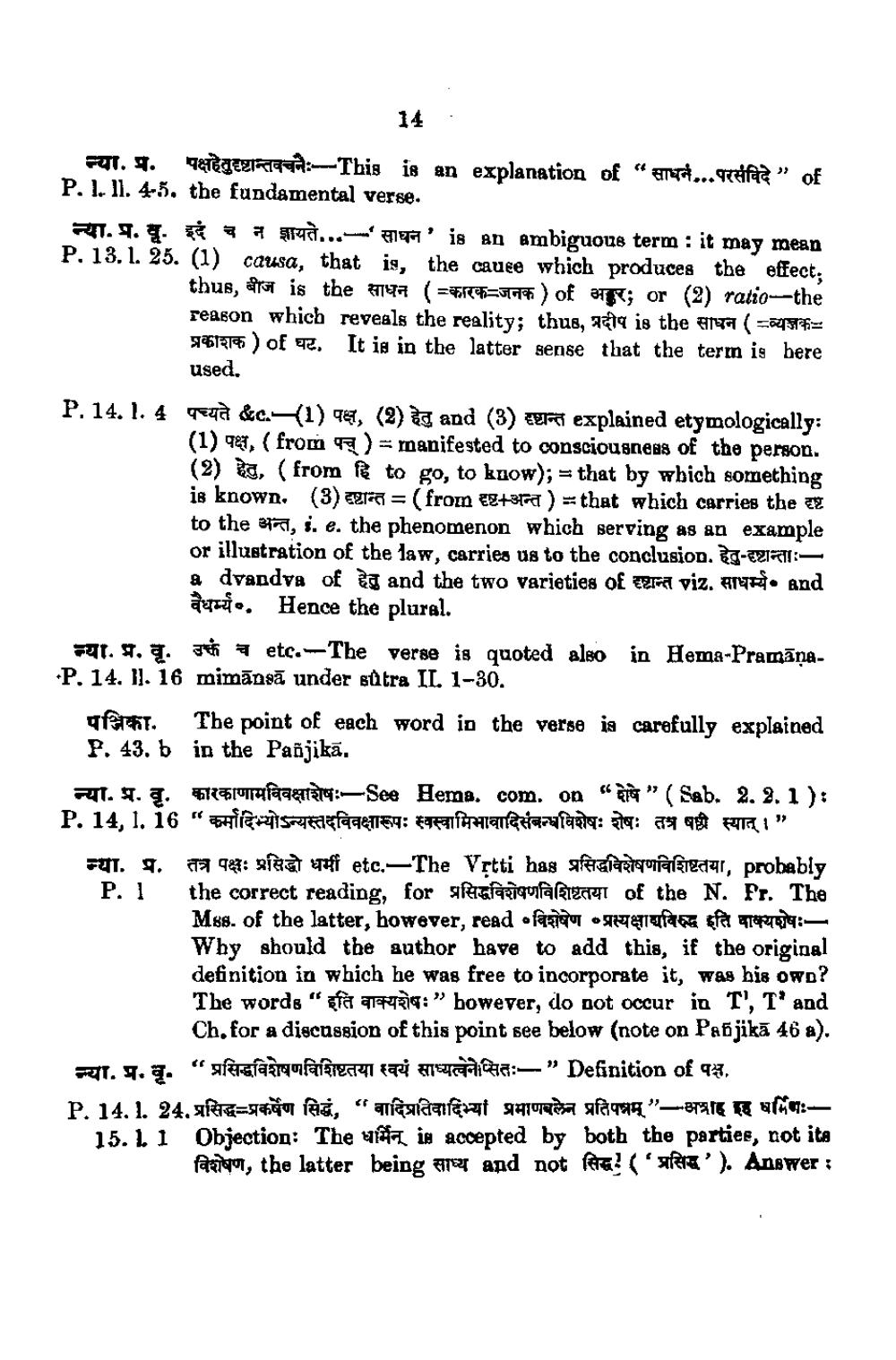________________
14
:
Fol. 4. TETEJEZIKETA:- This is an explanation of " Enti... ipad” of P. I. 11. 4-5. the fundamental verse.
21.9.. q ...-HT' is an ambiguous term : it may mean P. 13. 1. 25. (1) causa, that is, the cauee which produces the effect,
thus, बीज is the साधन (=कारक-जनक) of अहुर; or (2) ratio-the reason which reveals the reality; thus, 21 is the ( 574= 791314 ) of 92. It is in the latter sense that the term is bere
used. P. 14. l. 4 qeyd &c.—(1) 9 (2) and (3) ter explained etymologically:
(1) 923, ( from 2 ) = manifested to consciousness of the person. (2) g, (from R to go, to know); = that by which something is known. (3) c2r2n = (fron €2+372) = that which carries the ex to the 377, s. e. the phenomenon which serving as an example or illustration of the law, carries us to the conclusion. T9-E2IFTI:a dva dva of ĉo and the two varieties of any viz. ATTR• And
ante. Hence the plural. 91. . q. etc. --The verse is quoted also in Hema-PramāņaP. 14. }]. 16 mimānsā under stra II. 1-30.
gfernt. The point of each word in the verse ia carefully explained P. 43. b in the Pañjikā. 21.9.q. imalaganate:See Hema. com. on "e" (Sab. 2. 2. 1): P. 14, 1. 16 "mensahetaqe154: 497 f Hanedanfaata: 379: 29 FITI" FUT. 9. 1999: sieht auff etc.—The Vitti has shalattaleredar, probably P.I the correct reading, for salepiqua fredet of the N. Fr. The
Mas of the latter, however, read ofazian quyulan sfat 474449:Why should the author have to add this, if the original definition in which he was free to incorporate it, was his own? The words "tà aranya:" bowever, do not occur in T', T and
Ch.for a discussion of this point see below (note on Panjikā 46 a). T. 9.2. "sferafamulaitienu vai caca:- " Definition of 2. P. 14. 1. 24. sig=slvor fadi," aliandaient saturada afan"-Tik ufa:15.1. 1 Objection: The unit is accepted by both the parties, not its
विशेषण, the latter being साध्य and not सिद्ध ('प्रसिद्ध' ). Answer :




